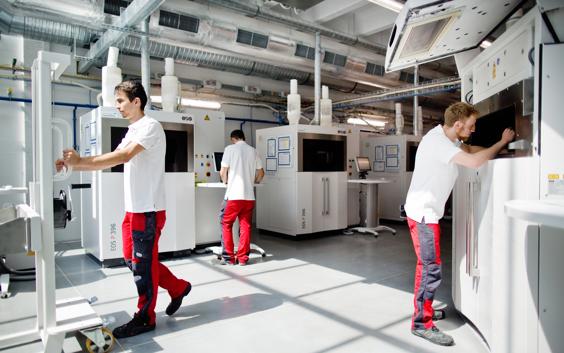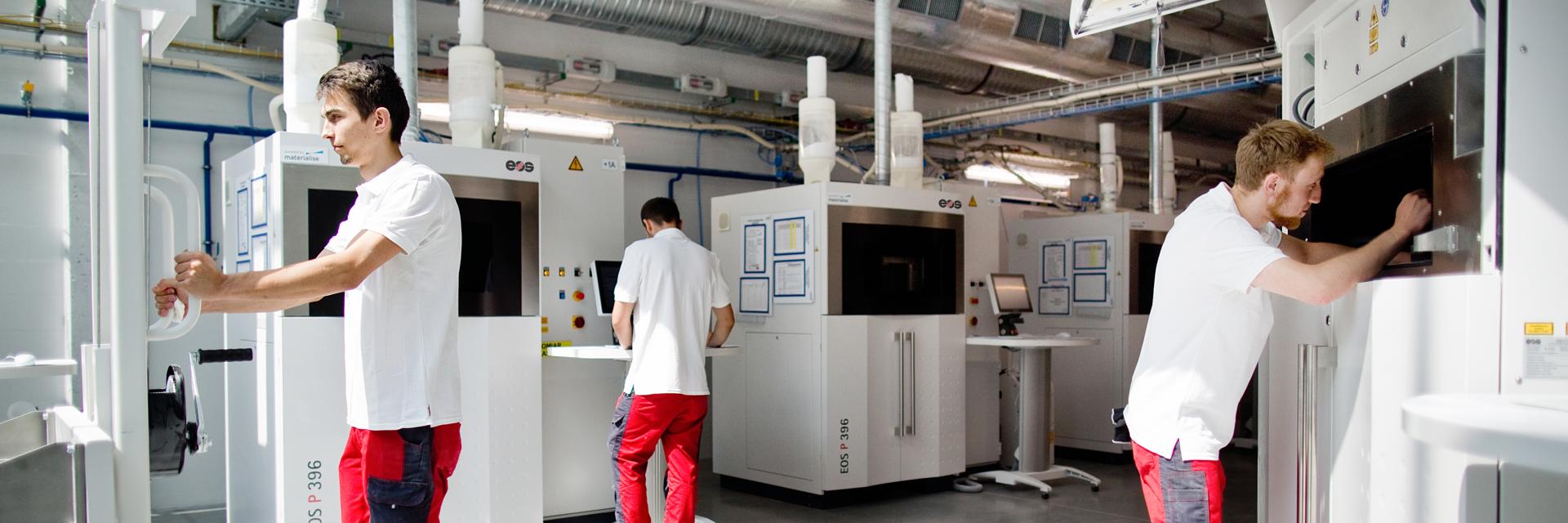EXPERT INSIGHT
3D Printing Beyond Prototyping: Accelerating Additive Manufacturing Adoption Is an Industry-Wide Responsibility

3D printing is slowly moving out of the prototyping era, and it’s ready and waiting for manufacturers to adopt it as a fully-fledged manufacturing technology. Jurgen Laudus, Vice President of Materialise Manufacturing, explains what you can expect on the path to series production, the key differences between these two approaches, and why you don't have to do it alone.
If you were to ask me right now, “Jurgen, what is the state of the additive manufacturing industry today?” my answer would be very positive. In many ways, it has never been stronger.
But it is also true that our industry can still go so much further. Not purely in how many manufacturers adopt the technology, but what they use it for, and when. The good news is that 3D printing is already well-known and well-established. Manufacturers understand what it is and the benefits it brings. They know why to use it — now they are asking how to take that next step.
- How do I fully integrate 3D printing into my production line?
- How do I find more applications?
- How do I make the jump from prototyping to series production?
From prototyping to series production
These three questions are proof of the biggest challenges to achieving widespread AM adoption, and chances are you’ve asked them yourself. Perhaps you know that you need AM expertise but struggle to bring it in-house. Maybe you know that 3D printing has a lot to offer, from design freedom to economic and supply chain perks, but you aren’t sure how to continuously spot suitable applications. And even those who have used it for a long time can struggle to take the next step — scaling up production, from prototyping to small series and beyond.
And that really is the next step. For all the awareness of its benefits, 3D printing is still synonymous with prototyping, but it can be so much more. Our responsibility within the AM industry is to shine a light on that, to educate manufacturers about what sets these two applications apart, and help change the perception that many still have by highlighting the cases that prove its readiness for series production. After that, it’s up to you as a manufacturer to put your trust in the technology and show that desire to be a pioneer in your field.
So, let me get things started. What separates prototyping from series production, and how can you transition between them?
On the surface, it’s very obvious. Prototypes are one-off prints, most often functional. You print, you test, you redesign, and you repeat until you’re satisfied. In series production, you print the same part repeatedly in batches, but there’s one very important distinction. Printing one part in a series of 100 is very different from printing one part 100 times — what really sets them apart is control.
The practical transition
When you 3D print a part, you generate its properties during production. Everything from density to dimensional accuracy is impacted by the process, making it just as important as the material you choose, and the level of repeatability between builds is somewhat misunderstood. There’s no copy and paste between prints, and reaching the consistency manufacturers demand isn't automatic. Careful process control is required to ensure the repeatability, traceability, and reliability they need.
To achieve those three requirements and scale up to series production, you can expect something of a technical transition: working within an NPI process, following careful quality and process controls, and, in some cases, relying on dedicated AM production lines. I’d like to break each of these down in a bit more detail.
Let’s start with the NPI process. The exact details may vary between 3D printing suppliers, but the idea is the same: take an idea from concept to scaled production. Generally, you and your additive manufacturing supplier will work together to determine and lock in the project’s requirements, assess the feasibility of your design, and select the optimal combination of material, technology, and finish. After identifying any unique development needs — let’s use a cleanable surface finish as an example — they’ll validate the design through a few production runs, providing all the necessary data to move into series production.
The quality and process controls come into play throughout that development, and they’re crucial. Without going into too much detail, you can generally expect this to cover process validation, including installation qualification (IQ), operational qualification (OQ), and performance qualification (PQ), alongside all the relevant process documentation. Certifications such as ISO 9001, ISO 13485, EN 9100, and any other industry-specific qualifications you require as a manufacturer will impact all of this, too.
Perhaps most important, however, is the communication that comes with it. 3D printing suppliers can provide all the documentation you need to satisfy your industry. They will also know to inform you directly if they make any changes to the process that could impact your part’s form, fit, or function.
The mind shift
Of course, there are two sides to every project. I like to think that 3D printing is collaborative. As a service provider, we bring expertise in 3D printing, while the customer brings expertise in their industry and products. By combining that knowledge, we can deliver the best results and take adoption further, but that also requires trust and transparency on the client side, along with a willingness to change.
That necessary mind shift is made up of two main elements. Firstly, it’s in the way you approach design and potential 3D printing providers. It’s important that you’re aware of your needs from the start, including the characteristics that need to be consistent in every part you print. By providing that information beforehand, your partners can ensure the controls are in place for every printing run — something that won’t happen in prototyping unless specifically requested.
Before you even reach that stage, however, it’s important to understand the difference that designing for additive manufacturing (DfAM) can make. You can already gain advantages from 3D printing when producing a smaller series, for example, but the true benefits come when you adapt your design for 3DP. Just like with any other technology, you can seriously reduce your cost or increase value if you design specifically for the technology you’re using. Knowing how to reduce weight, increase strength, build in functionality, print complex parts in single pieces, and combine 3D printing with traditional techniques — plus so much more — can have a big impact.
We in the industry need to ensure that you have the tools and learning opportunities to gain that knowledge. In my opinion, it’s a prerequisite for the second major mind shift to take place: understanding where additive manufacturing fits within your production setup and ensuring that the technology is top of mind throughout your product development process. Rather than being seen as a niche or novelty that you pull out on special occasions, you should consider and evaluate 3D printing like any traditional technology when you’re prototyping or considering redesigning an existing part. After all, at its best, 3D printing is complementary — it’s not all or nothing but coexists with the technologies you already know and use.
The industry’s goal must be to help manufacturers like you take that mindset even further, to the point where you can feel confident in planning to use AM for series production from the outset when the application is suitable.
You don't have to do it alone
And that brings me back to the big question: how? In the title of this piece, I said that accelerating adoption is an industry-wide responsibility, and that’s because it’s not just a question that you, as a customer, need to answer.
Our industry must show you how you can make the jump between those stages of adoption and offer you the services you need to do so. By providing robust, repeatable processes, we can instill the confidence to adopt 3D printing as a core component of your production strategy.
At Materialise, our approach distinguishes between prototyping and series production, with a unique pathway for each application. This means we can tailor the support we offer depending on where manufacturers are in the production process and work to demystify 3D printing’s role in that progression through dedicated training sessions for all levels.
After that, we need something from you as a manufacturer. We need you to be brave. Innovative. Forward-thinking and ahead of the curve. Instead of waiting for manufacturing standards to appear, be the one to set those standards. It’s what 3D printing has always been about.
Together, we have the power to drive this evolution, ensuring additive manufacturing is recognized not just for prototyping but for its proven capabilities in series production. If we continue to collaborate, innovate, and educate, I believe we can make widespread adoption a reality sooner rather than later.
Share on:

Meet the author
Jurgen Laudus
You might also like
Never miss a story like this. Get curated content delivered straight to your inbox.
